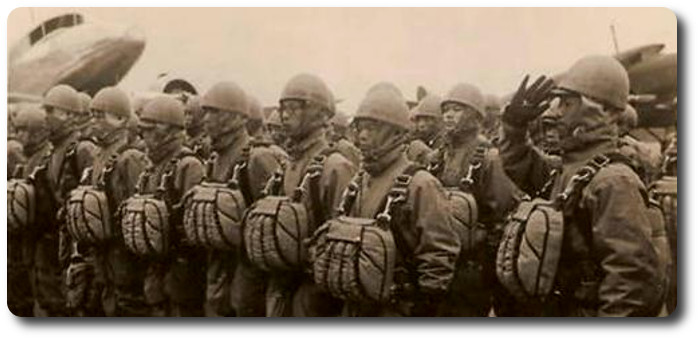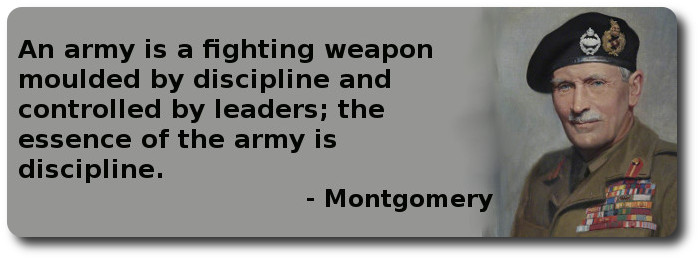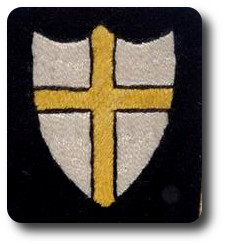Topic: CEF

Tank Notes — Use of Tanks in Germany.
Military Notes on Training and Instruction, No. 1, U.S. Army, August 1918 (From French Military Advisory Mission Bulletin).
The Germans are said to have stopped the tanks at Cambrai in the following way: The rifle and artillery fire compelled the infantry waves to remain in place; the advancing tanks were easily attacked with grenades (concentrated charges) and with small arms (S. R. M. bullets), once they were cut off, batteries also took part in their destruction.
As a result of this experience the Germans are said to have drawn the following conclusions on the subject of the organization and use of their tanks:
1. Necessity of having more rapid tanks (a good many sources indicate speeds averaging 8 kilometers on hilly ground).
2. The tanks advance in quincunxes, in zig-zags.
3. The tanks are protected in the front and on the flanks by the infantry sturmtrupps marching on each side at 150 to 200 meter intervals.
4. For training purposes there is a "Tankschule" in Germany and also vast manoeuvering grounds, one of which is in the neighborhood of Montmedy.
Description.
The tank is torpedo shaped. It weighs 10 tons and measures about 8 meters in length, 3 meters in width and about 2.5 meters in height. It resembles the British tanks, except in the matter of "bandages." The tank was completely protected by armored plating. The loop holes could be closed by means of shutters which, according to the prisoners, hermetically seal the openings against gas. The tank can turn rather easily.
Armament.
(a) A rapid fire 5 cm. gun, on a pivot, with a periscopic sight. The gun has an angle of elevation of 60 degrees. An illuminating shell, which lights up the terrain in front for three minutes, is said to be used for night action. The gun also fires gas shells.
(b) Four machine guns, one on each side, one in the front and one in the rear. The two last have an angle of elevation of 50 degrees.
(c) Flame projectors, to be used in place of the machine guns in case of an obstinate resistance. The flame was projected a distance of 60 meters. It was produced by a mixture of tar and an exceedingly inflammable matter called "carbolineum," expelled by oxygen under high pressure.
Engine.
The 8-cylinder 250 horsepower engine was mounted in an interior compartment. A light producing dynamo was driven by the closed engine. The tank is said to be capable of 15 km. (?) per hour on flat terrain.
Personnel.
The personnel of a tank includes 2 drivers, 2 gunners, 4 machine gunners and 2 extra men, all under the orders of a junior engineer officer. The personnel all wear fire-proof clothing.







 Well, I've got back to camp again. We have had a rough twenty-four hours of it; it rained nearly the whole time. The enemy kept pitching shell into us nearly all night, and it took us all our time to dodge their Whistling Dicks (huge shell), as our men have named them. We were standing nearly up to our knees in mud and water, like a lot of drowned rats, nearly all night; the cold, bleak wind cutting through our thin clothing (that now is getting very thin and full of holes, and nothing to mend it with). This is ten times worse than all the fighting.
Well, I've got back to camp again. We have had a rough twenty-four hours of it; it rained nearly the whole time. The enemy kept pitching shell into us nearly all night, and it took us all our time to dodge their Whistling Dicks (huge shell), as our men have named them. We were standing nearly up to our knees in mud and water, like a lot of drowned rats, nearly all night; the cold, bleak wind cutting through our thin clothing (that now is getting very thin and full of holes, and nothing to mend it with). This is ten times worse than all the fighting.




 He is a patriot, is highly motivated and has integrity.
He is a patriot, is highly motivated and has integrity.







 On taking command of the
On taking command of the 


 Sir,—Your remarks in last Saturday's Mail and Empire, concerning the society of officers in the Canadian militia, were worthy of the serious consideration of all who have the welfare of our country at heart. I have had some experience in militia matters, and ask for a small part of your valuable space, wherein to condemn the penuriousness of the Government and the bare-faced robbery of militia officers by military tailors and outfitters.
Sir,—Your remarks in last Saturday's Mail and Empire, concerning the society of officers in the Canadian militia, were worthy of the serious consideration of all who have the welfare of our country at heart. I have had some experience in militia matters, and ask for a small part of your valuable space, wherein to condemn the penuriousness of the Government and the bare-faced robbery of militia officers by military tailors and outfitters.
 There died at Wolseley Barracks yesterday afternoon a former soldier of the Canadian militia, whose decease removes, perhaps, one of the best known, but certainly the best drill instructor, the Canadian militia could boast of. Corporal James Edward Burns was born at Niagara-on-the-Lake some forty years ago, and in his early boyhood joined the 14th Battalion, Prince of Wales Own Rifles, at Kingston, and served for a couple of years as a bugler. Later on he was found in the ranks of the Royal Canadian Rifles, which regiment was disbanded in 1870. He served in the Provisional Battalion in Red River in 1873, having been in the Red River Expedition under the present Lord Wolseley, commander-in-chief of Her Imperial Majesty's Imperial army. He next served a term in "A" Battery, Royal Canadian artillery, and from there went to "C" Company (now No. 2 Company, Royal Regiment Canadian Infantry). With this corps he took part in the North West Rebellion of 1885. He was transferred to London on the organization of the Company, and has served here ever since. His term of service expired on the 14th, inst., and not twenty-four hours later he joined the silent army of the dead. Corporal James Burns was known far and wide. He has acted as drill instructor to almost every Battalion in this district, and what he did not know regarding drill, to use a common expression, "was not worth knowing." As a soldier he served his Queen and country well and faithfully, and his decease leaves a vacancy it will be hard to fill. He was well known to the members of the 7th Battalion, having been their instructor for several months under Col. Payne and Col. Tracey, and was highly esteemed by all their non-com. officers. He took an active part in all the athletic sports, at both the Barracks and the Asylum, and was ever ready to lend a helping hand at any and every amateur performance where his services were required. He will be sadly missed at Wolseley Barracks, where he was a general favourite, and where his manly conduct, thorough soldierly bearing and genial disposition endeared him to the hearts of all. His father is Chief of Police at Niagara-on-the-Lake, and is not at all in good health at present. Corporal Burns was married and leaves a sorrowing widow to whom the heartfelt sympathy of all is extended. The funeral will be a military one to the Grand Trunk station on Friday morning. Full military honours will be paid to the deceased soldier.
There died at Wolseley Barracks yesterday afternoon a former soldier of the Canadian militia, whose decease removes, perhaps, one of the best known, but certainly the best drill instructor, the Canadian militia could boast of. Corporal James Edward Burns was born at Niagara-on-the-Lake some forty years ago, and in his early boyhood joined the 14th Battalion, Prince of Wales Own Rifles, at Kingston, and served for a couple of years as a bugler. Later on he was found in the ranks of the Royal Canadian Rifles, which regiment was disbanded in 1870. He served in the Provisional Battalion in Red River in 1873, having been in the Red River Expedition under the present Lord Wolseley, commander-in-chief of Her Imperial Majesty's Imperial army. He next served a term in "A" Battery, Royal Canadian artillery, and from there went to "C" Company (now No. 2 Company, Royal Regiment Canadian Infantry). With this corps he took part in the North West Rebellion of 1885. He was transferred to London on the organization of the Company, and has served here ever since. His term of service expired on the 14th, inst., and not twenty-four hours later he joined the silent army of the dead. Corporal James Burns was known far and wide. He has acted as drill instructor to almost every Battalion in this district, and what he did not know regarding drill, to use a common expression, "was not worth knowing." As a soldier he served his Queen and country well and faithfully, and his decease leaves a vacancy it will be hard to fill. He was well known to the members of the 7th Battalion, having been their instructor for several months under Col. Payne and Col. Tracey, and was highly esteemed by all their non-com. officers. He took an active part in all the athletic sports, at both the Barracks and the Asylum, and was ever ready to lend a helping hand at any and every amateur performance where his services were required. He will be sadly missed at Wolseley Barracks, where he was a general favourite, and where his manly conduct, thorough soldierly bearing and genial disposition endeared him to the hearts of all. His father is Chief of Police at Niagara-on-the-Lake, and is not at all in good health at present. Corporal Burns was married and leaves a sorrowing widow to whom the heartfelt sympathy of all is extended. The funeral will be a military one to the Grand Trunk station on Friday morning. Full military honours will be paid to the deceased soldier.
 The funeral of Corporal James Edward Burns took place this morning. The procession left Wolseley Barracks and marched to the Grand Trunk station, where the body was taken on the noon train for interment at Niagara-on-the-Lake. The regular and attached men made the largest showing in the history of the barracks. The coffin was carried on a London Field Battery gun carriage, and the artillery detachment was in charge of Lieut. R. Shaw-Wood. The Union Jack covered the casket, and on the flag reposed the side arms and helmet of the dead soldier.
The funeral of Corporal James Edward Burns took place this morning. The procession left Wolseley Barracks and marched to the Grand Trunk station, where the body was taken on the noon train for interment at Niagara-on-the-Lake. The regular and attached men made the largest showing in the history of the barracks. The coffin was carried on a London Field Battery gun carriage, and the artillery detachment was in charge of Lieut. R. Shaw-Wood. The Union Jack covered the casket, and on the flag reposed the side arms and helmet of the dead soldier.
 The CPLA issues three kinds of rations: the standard ration, the combat ration, and the emergency ration.
The CPLA issues three kinds of rations: the standard ration, the combat ration, and the emergency ration.